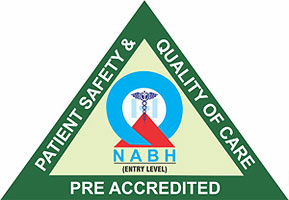+91-7291089674 (Bandra)
+91-7291092120 (Kandivali)




March 7, 2023 | Author: Admin
Cardiovascular disease can cause a variety of symptoms, including chest pain/pressure, exhaustion and shortness of breath, as well as high blood pressure and irregular heartbeat.
Did you know that illness of heart and blood vessels might have an impact on your eyes? In fact, in some circumstances, an eye exam may be able to detect the early indicators of cardiovascular disease before other methods. This is why it is critical to have both your eye and cardiovascular health evaluated.
Hypertension: High blood pressure causes artery lining damage. As dietary fats circulate in the bloodstream, these damaged arteries lose their flexibility. As a result, blood flow becomes restricted and turbulent, increasing the risk of eye and heart illness.
High cholesterol: Cholesterol in the eyes can cause a blockage of the blood vessels that supply nutrition to the retina. This blockage, known as an occlusion, deprives the cells of oxygen and glucose, causing retinal damage.
Diabetes is associated with heart disease: Diabetes increases the risk of both heart disease and eye problems. Diabetes and heart disease frequently go hand in hand. Diabetes is the leading cause of blindness in adults aged 20 to 74.
Obesity: Obesity is associated with various risk factors for heart disease and eye disease, including:
Advanced age: People over the age of 65 are at an increased risk of a heart attack, stroke, heart disease, and heart failure. They are also more susceptible to cataracts, glaucoma, AMD, diabetic retinopathy, and retinal detachment.
Smoking: Tobacco use raises the risk of cataracts, AMD, diabetic retinopathy, uveitis, optic nerve damage, Graves’ disease, and dry eye.
1. Retinal artery occlusions: An embolism is the most prevalent cause of a central retinal artery occlusion. This is an arterial blockage. The most prevalent types of blockages are caused by cholesterol and calcium, as well as blood clots from the heart valves.
2. Retinal vein occlusions: Occlusions of the central or branch retinal veins can occur as a result of high blood pressure, these are another type of eye stroke. They are caused by blood clots, narrowed blood vessels, or tightened arteries, which compress veins at junctions where they cross.
3. Amaurosis fugax: Amaurosis fugax is a temporary loss of vision in one or both eyes that can last from seconds to 30 minutes or longer. There are numerous reasons for transitory visual loss, including low blood pressure, migraine, optic nerve compression or inflammation, and others.
4. Hypertensive optic neuropathy: High blood pressure can cause optic neuropathy, or nerve damage. Damage to the nerve fibers can result in vision loss if the blood supply to the optic nerve is blocked.
5. Occipital lobe stroke: When this happens, the symptoms of vision loss and changes in eyesight can vary depending on the location. Heart disease, high blood pressure, high cholesterol, smoking, and diabetes are all risk factors for stroke.
6. Hypertensive retinopathy: High blood pressure can cause arteriosclerosis by damaging the blood vessels. It can produce retinopathy in the retina and cause:
The risk of hypertensive retinopathy increases, if the patient is diabetic.
7. Diabetic macular edema: Diabetic macular edema (DME) can be caused by diabetic retinopathy, affecting about 1 in every 15 diabetic patients. It is caused by blood vessels leaking fluid into the macula, resulting in hazy vision.
8. Hypertensive chorioretinopathy or choroidopathy: High blood pressure can cause damage to the blood vessels in the eye, causing them to leak. This leak might cause fluid to accumulate beneath the retina. Choroidopathy is the medical term for this illness.
9. Glaucoma: Having a heart illness is a substantial risk factor for glaucoma.
10. Diabetic retinopathy: Diabetes type 2 is strongly linked to cardiovascular disease. Diabetic retinopathy is a condition that affects the blood vessels of the retina. Damage to the retina can occur as a result of restricted blood flow, bleeding in the eye, or the formation of leaky blood vessels.
11. Xanthelasma: Yellow, elevated patches around the eyes and near the nose are known as xanthelasma. They are caused by cholesterol buildup beneath the skin. While they have no effect on your vision, almost half of the individuals who suffer from xanthelasma have elevated cholesterol which could point towards probable heart disease.
12. Neovascular glaucoma: Diabetic retinopathy can also cause abnormal blood vessels to develop in the area of the eye that drains fluid. These abnormal blood vessels obstruct fluid outflow and can cause secondary glaucoma.
13. Cataract: There is evidence that there is a link between cataracts and heart disease.
14. Arcus Senilis: As people age, fatty substances and cholesterol can form a light gray or blue ring around the edge of the cornea, known as the arcus senilis. This condition is common and causes no concern in middle or older age. However, if it arises in childhood or early adulthood, it may be a sign of elevated cholesterol or other health problems.
These easy-to-implement lifestyle adjustments can reduce your risk of eye and heart disease:
The health of the eyes and the health of the heart are closely linked. Annual thorough eye exams assist to guarantee that not only your eyes, but also your heart, stays healthy.
Ojas-Eye Hospital in Mumbai is the best option if you need cutting-edge eye care for any of your eye issues. We provide the most thorough eye-related treatment via state-of-the-art technical equipment. To find out more about our services for eye care, contact us right now.